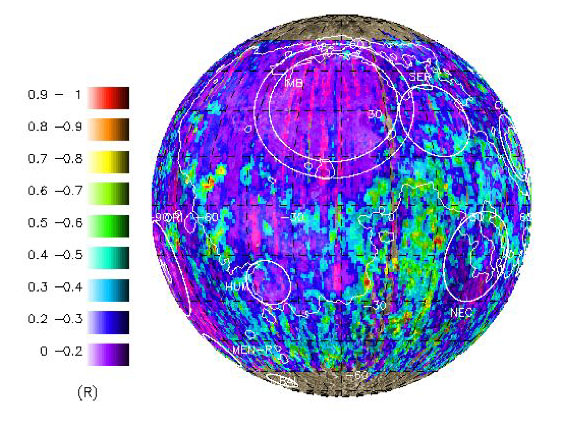April 24, 2015
Magnetic Moon
Originally published April 23, 2004
Image Credit: Jasper Halekas |
|
Magnetic Moon The Moon lacks a dynamic magnetic field, but does possess remanent magnetization locked in when lunar rocks cooled and solidified billions of years ago. In 1998 the Lunar Prospector (LP) spacecraft collected 400,000 measurements of lunar magnetization - enough to make the first global map of surface magnetic field strength. The map shows an index of field strength called the electron reflection coefficient, R. Small values of R (purple to blue) correspond to small magnetic fields, and high Rs (red and orange) map high magnetic fields. The much more extensive LP data confirms Apollo results showing that the lunar surface is variably magnetized. Impact basins themselves are only weakly magnetized, but the antipodal areas to the basins are strongly magnetized. This is not obvious here since the antipodes of most large basins are on the farside. Apollo data discovered two strong magnetic fields Reiner Gamma (LPOD Feb. 2) and the Sirsalis Rille, and LP adds another localized strong field at 80W, 10S. The Sirsalis anomaly nicely overlays part of the rille and has been interpreted as the magnetic signature of a magmatic dike (linear igneous intrusion) that underlies the rille. Other localized strong anomalies are visible between Imbrium and Nectaris. It is possible that all these anomalies are somehow related to basin ejecta from Orientale, Imbrium and Nectaris, but the mechanism is unknown. Technical Details: Related Links: Yesterday's LPOD: Earth Day Tomorrow's LPOD: The Star of Astronomy Night |
Author & Editor:
Charles A. Wood
COMMENTS?
Register, Log in, and join in the comments.




